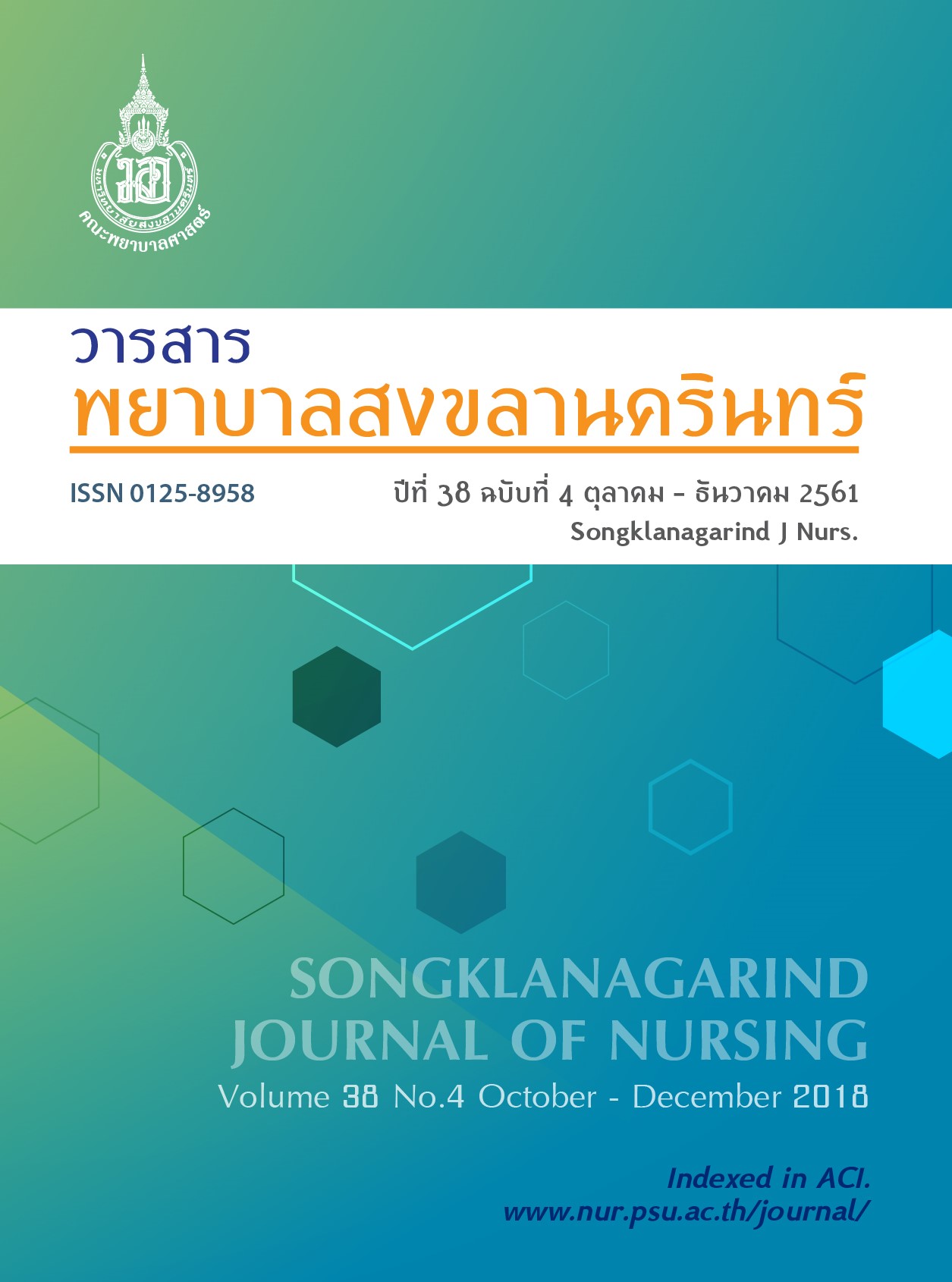Voices from inside Dayah Culture: Using Photovoice to Explore Lives of Indonesian Muslim Female Adolescents
Main Article Content
Abstract
This study explored the living experience of female adolescents in an Islamic boarding school (dayah) in Aceh Province, Indonesia. This article is part of a critical ethnographic study which was conducted using photovoice as its main data collection method, involving 34 female adolescents as key participants. Two focus group discussions and three in-depth interviews were conducted using photo interviewing with seven key participants. The initial themes from photo interviewing were then further explored via additional data collection with all key participants and five associate participants to ensure comprehensive and saturated data. Four themes emerged from the findings as follows: hardship of studying, stringent and austere living arrangements, barriers to health care access, and regulation and punishment as strategies for expected behavior change. The study showed that photovoice is very useful for researching this specific culture of Muslim female adolescents. Photovoice revealed the sensitive issues of this culture while empowering the participants through the research process. The study shed light on how dayah culture can restrict the ability of female adolescents to improve their health. The findings confirmed that photovoice can provide rich data. It also gave the female adolescents a sense of autonomy, making them more vocal in calling for positive change.
Article Details
References
2. Catalani C, Minkler, M. Photovoice: A review of the literature in health and public health. Health Educ Behav. 2010; 37(3): 424-51. doi: 10.1177/1090198109342084.
3. Brickle MB, Evans-Agnew R. Photovoice and youth empowerment in environmental justice research: A pilot study examining woodsmoke pollution in a Pacific Northwest community. J Community Health Nurs. 2017; 34(2): 89-101. doi: 10.1080/07370016.2017.1304148.
4. Hergenrather K, Rhodes S, Cowan C, et al. Photovoice as community-based participatory research: A qualitative review. Am J Health Behav. 2009; 33(6): 686-98.
5. Woodgate RL. It is about being outside: Canadian youth’s perspectives of good health and the environment. Health & Place. 2014; 31:100–11.
6. Findholt NE, Michael YL, Davis MM. Photovoice engages rural youth in childhood obesity prevention. Public Health Nurs. 2011, 28(2): 186-92. doi: 10.1111/j.1525-1446.2010.00895.x
7. Chonody J, Ferman B, Welsh JA, et al. Violence through the eyes of youth: A photovoice exploration. J Community Psychol. 2013; 41(1): 84-101.
8. Government of Indonesia. Regulation of Ministry of Religious Affairs on Islamic education number 13 of 2014. Jakarta, Republic of Indonesia: Ministry of Religious Affairs; 2014.
9. Government of Indonesia. Act of the republic of Indonesia number 20 of 2003 on the national education system. Jakarta, Republic of Indonesia: Ministry of National Education; 2013.
10. Parker L. Introduction: Islamic education in Indonesia. Review of Indonesian and Malaysian Affairs. 2008; 42(1): 1-8.
11. Nilan P. The spirit of education in Indonesian pesantren. Br J Sociol Educ. 2009; 30(2): 219-32. doi.org/10.1080/01425690802700321
12. WHO. Women and health: Today’s evidence, tomorrow’s agenda. Geneva, Switzerland: WHO; 2009.
13. Ministry of Religious Affairs. Statistics of Islamic education school year 2013-2014. Jakarta, Republic of Indonesia: Ministry of Religious Affairs; 2014.
14. Husin A. Leadership and authority: Women leading dayah in Aceh. In Smith BJ, Woodward M, editors. Gender and power in Indonesian Islam. New York: Routledge; 2014.
15. Castles L. Notes on the Islamic school at Gontor. Indonesia. 1966; 1(1): 30-45.
16. Government of Aceh. Regulation of government of Aceh on the principles of Islamic law. Banda Aceh: Government of Aceh; 2014.
17. Wanat S, Whisnant J, Reicherter D, et al. Coping with the challenges of living in Indonesian residential institutions. Health Policy. 2010; 26: 45-50. doi: 10.1016/j.healthpol.2010.01.001.
18. QSR International Pty Ltd. NVivo qualitative data analysis software (Version 10.0.641.0SP6); 2012. Available from http://www.qsrinternational.com/
19. Carspecken PF. Critical ethnography in education research. New York: Routledge; 1996.
20 Srimulyani E. Gender in contemporary Acehnese dayah: Moving beyond docile agency? In BJ Smith, M Woodward, editors. Gender and power in Indonesian Islam. New York: Routledge; 2014.
21. Erikson E. Identify: Youth and crisis. New York: Norton; 1968.
22. Epstein I, Stevens B, McKeever P, et al. Photo elicitation interview (PEI): Using photos to elicit children’s perspective. Int J Qual Methods. 2006; 5(3): 1-9.
23. Adebayo ES, Ojengbede OA. Using photovoice in adolescent health research: A case-study of the well-being of adolescents in vulnerable environments (WAVE) study in Ibadan, Nigeria. 2016. Published Online: 2016-114. doi: https://doi.org/10.1515/ijamh-2016-0040
24. McHoul A, Grace W. A Foucault primer: Discourse, power and the subject. New York: University Press; 1993.
25. Steinberg L. Adolescence. 9th ed. New York: McGraw-Hill; 2011.
26. WHO. Global standards for quality healthcare services for adolescents: A guide to implement a standards-driven approach to improve the quality of health care services for adolescents. Geneva, Switzerland: WHO; 2014.
27. Coleman JC. The nature of adolescence. 4th ed. London: Routledge; 2011.
28. Moletsane R, de Lange N, Mitchell C, et al. Photovoice as a tool for analysis and activism in response to HIV and AIDS stigmatization in a rural KwaZulu-Natal school. J Child Adoles Ment Health. 2007; 19(1): 19-28. doi: 10.2989/17280580709486632.
29. Srimulyani E. Women from traditional Islamic educational institutions in Indonesia: Negotiating public spaces. Amsterdam University Press; 2012.


